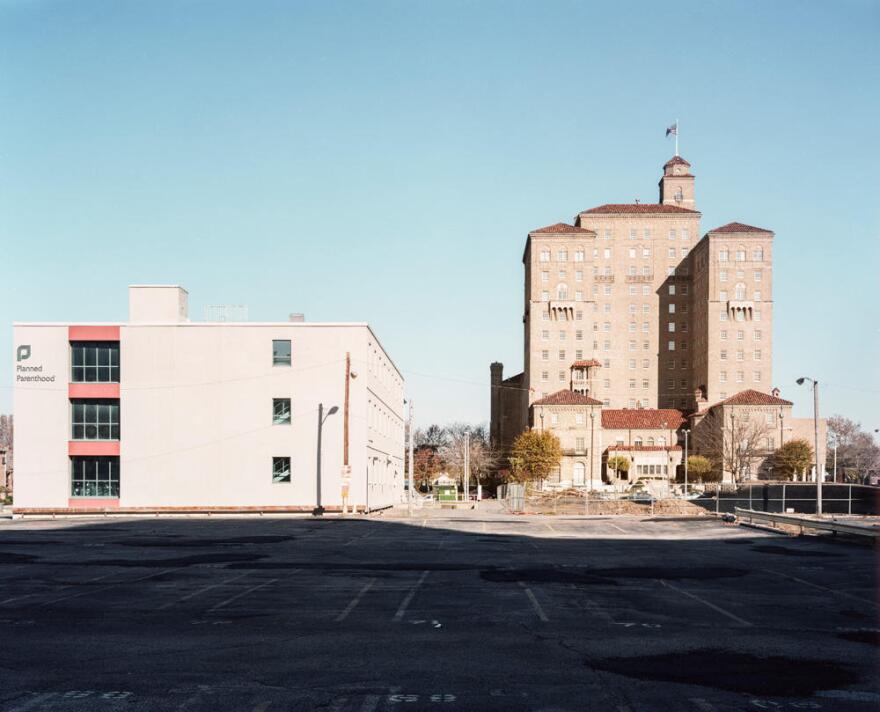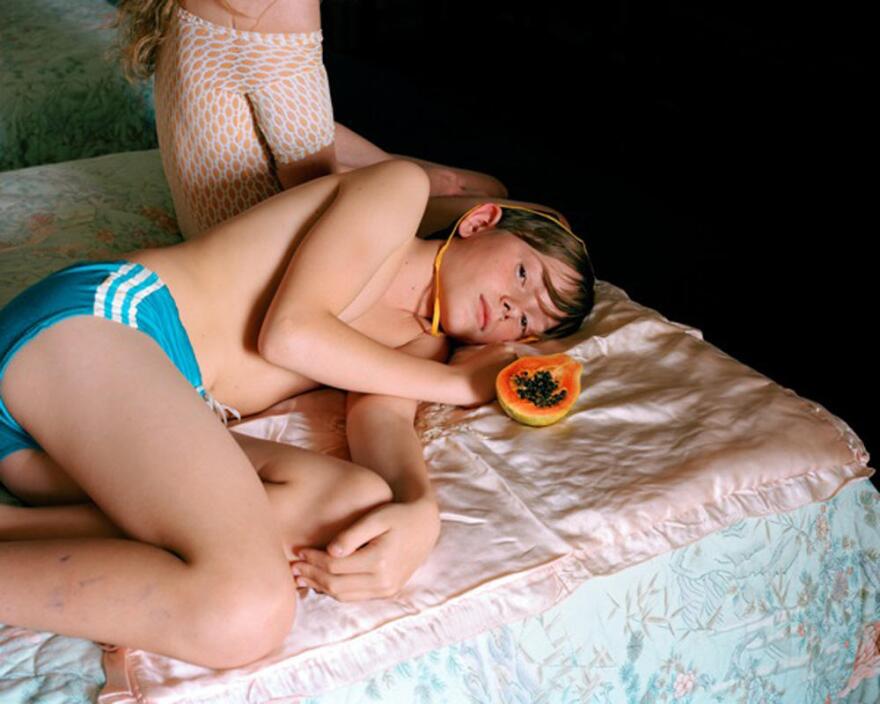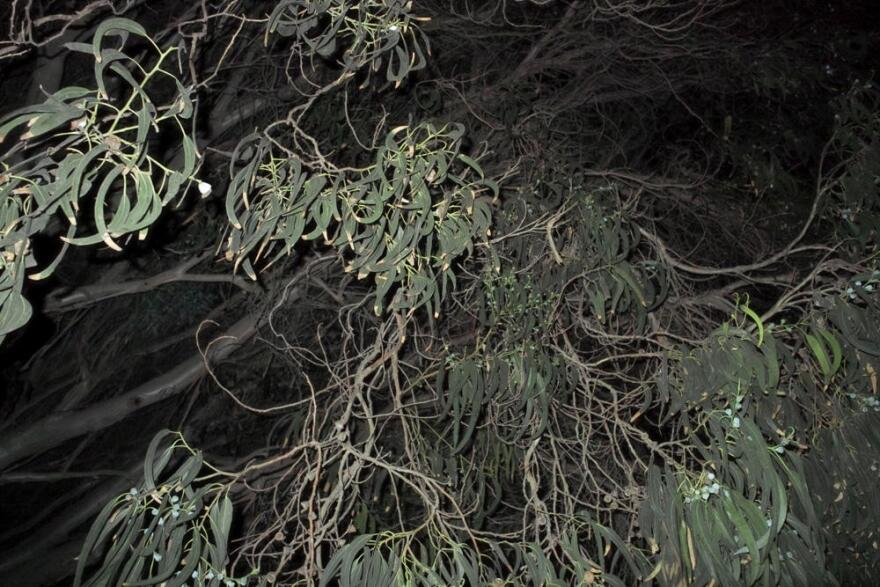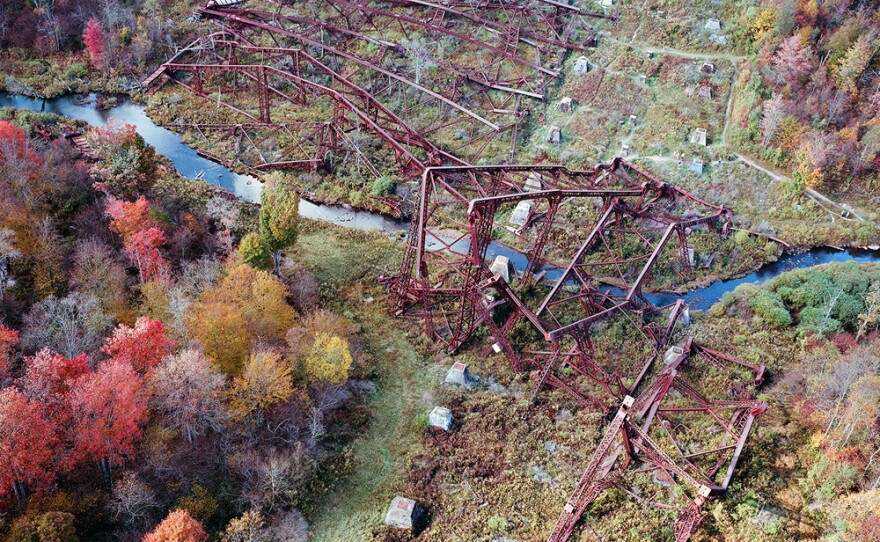Asked to name good cities for artists, most people would say New York or Los Angeles, maybe Chicago. And artists have indeed flocked to those towns for decades, if only because they’re where art buyers have flocked for decades. Silver Eye Center for Photography wants to help artists who live elsewhere get noticed.
Its new biennial, Radial Survey, is for artists living within a 300-mile radius of Pittsburgh.It’s a distance, notes executive director David Oresick, that ventures north into Canada and south into North Carolina, but rather cheekily excludes New York and Chicago.
“Traditionally in the art world it’s assumed that if you want to make a sort of big-time career in the arts that you’ve got to move to New York or Los Angeles,” says Oresick. “We just want to kind of push back against that, and say, you know, you can make a really meaningful impactful, career as an artist working from anywhere.”

The inaugural Radial Survey includes 12 hand-picked artists, most of them showing selections from series they’ve been working on – in all, about 150 individual images. Each hails from a different city, from Detroit and Buffalo to Rochester, N.Y., and Charlottesville, Va.
The photographs themselves range from documentary and portraiture to experimental work. Corine Vermuelen offers work from the years she’s spent living in Detroit, capturing the efforts of people to remake the city following the 2008 recession. Jared Thorne, of Columbus, Ohio, contributes “26 Planned Parenthoods,” a series for which he photographed every Planned Parenthood office in Ohio (most of which, tellingly, are practically hidden in fairly anonymous urban and suburban landscapes).
Work by Nydia Blas, of Ithaca, N.Y., excerpts her series exploring femininity and sexuality with posed, sometimes fanciful depictions of young women and girls. Morgan Ashcom, of Charlottesville, offers documentation of a fictional Southern town, titled “What the Living Carry.” And Eva O’Leary’s documentary series “Happy Valley” looks into what Oresick calls “gender dynamics” in State College, Pa.
Pittsburgh is represented by Melissa Catanese, with selections from “Apsis.” It’s a project, she says, “inspired by the universe of David Lynch” that she was invited to create for a Spanish magazine. The series, which incorporates text written by Miranda Mellis, consists of elliptical grouping of images – an oversized fingerprint, a fluorescent light fixture -- drawn from her personal archive of found and anonymous photos, as well as her original work.

“My goal was to create this psychologically charged atmosphere where time is suspended,” says Catanese. “There is no beginning, middle or end.”
Having formerly lived in New York City, Catanese has her own take on the goals of Radial Survey. She agrees it is difficult for artists living in smaller cities to get attention. But she thinks that might be changing.

“Ultimately, I think there is more of a move right now for artists to kind of decentralized themselves from those hubs,” says Catanese, who teaches at the University of Pittsburgh and in 2011 founded Spaces Corners, a project space for contemporary photography. (Spaces Corners also maintains a small bookstore inside Silver Eye’s Bloomfield gallery.)
Catanese says the advantages to life in a smaller city include more room, more time to work, more solitude and more quiet.
Oresick says that Radial Survey has no real theme beyond highlighting artists from the region.
“We really hope that by bringing this work together and by it being such high quality and interesting work, that it really starts a discussion about the work in the show, and also what does it mean to be an artist working in places like Pittsburgh and Buffalo and Charlottesville,” he says.
The opening gala for Radial Survey is Thursday. The exhibit opens to the public Friday and runs through May 25.
[This article has been revised to accurately render the title of one of the artists' series.]








